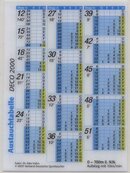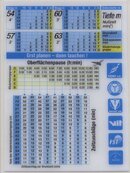alewar
Contributor
Hi there!
During the CMAS* instruction we used the "deco 2000" tables to calculate the safety stops and no-fly time.
What does GUE use for planing non-decompression, recreational dives?
Thanks.
During the CMAS* instruction we used the "deco 2000" tables to calculate the safety stops and no-fly time.
What does GUE use for planing non-decompression, recreational dives?
Thanks.







